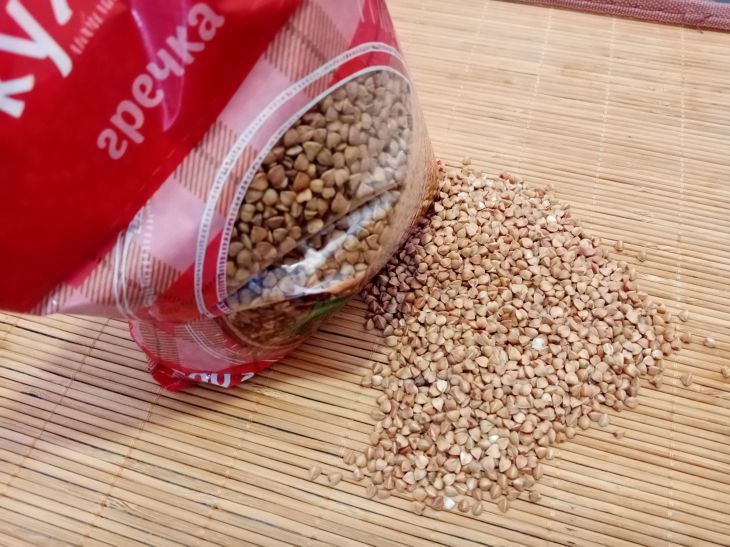- Dairy products: risk of decreased iron absorption
- Red meat: excess iron and stress on the gastrointestinal tract
- Coffee and tea: tannins block minerals
- Sugar and Sweets: Imbalance of the Glycemic Index
- Legumes: increased gas formation
- Raw Cruciferous Vegetables: Risk of Discomfort
- How to combine buckwheat correctly
What you shouldn't eat buckwheat with: remember these 6 combinations
Dietitians and nutritionists highlight several combinations that should be avoided in order to preserve the nutritional value of buckwheat and maintain health.
Dairy products: risk of decreased iron absorption
Buckwheat contains non-heme iron, which is less well absorbed than iron from animal sources. Calcium, found in milk, cottage cheese, or cheese, competes with iron for absorption in the intestines. According to WHO, calcium can reduce iron absorption by 50–60%.
Tip: If you have anemia or iron deficiency, eat buckwheat separately from dairy products. To improve iron absorption, add vitamin C - for example, vegetables (bell peppers) or lemon juice.
Red meat: excess iron and stress on the gastrointestinal tract
Although buckwheat and red meat are rich in iron, their combination creates an excessive load on digestion. The high protein content of both products slows down metabolism, causing heaviness in the stomach. In addition, excess iron is harmful for people with hemochromatosis.
Tip: combine buckwheat with light proteins, such as fish or turkey.

Coffee and tea: tannins block minerals
Tannins in tea and coffee form compounds with iron, magnesium, and zinc, preventing their absorption. A study published in the journal Food Science & Nutrition confirms that drinking tea immediately after a meal reduces iron absorption by 15–20%.
Advice: drink tea or coffee 1-2 hours after eating buckwheat porridge.
Sugar and Sweets: Imbalance of the Glycemic Index
Buckwheat has a low glycemic index (GI ≈ 40), but adding sugar, honey or syrups sharply increases blood glucose levels. This is especially dangerous for people with insulin resistance or diabetes.
Tip: Use natural spices (cinnamon, turmeric) or berries to enhance the taste without harming your health.
Legumes: increased gas formation
Buckwheat and legumes (beans, lentils) are sources of vegetable protein and fiber. However, their combination can cause flatulence due to the fermentation of undigested carbohydrates in the intestines.
Tip: If you want to combine these products, add spices that reduce gas formation (dill, cumin), or eat them separately.
Raw Cruciferous Vegetables: Risk of Discomfort
Raw cabbage, radishes, and broccoli contain goitrogens, which in large quantities can interfere with iodine absorption. In addition, the combination of coarse fiber from raw vegetables and buckwheat can cause bloating.
Tip: Give preference to stewed or boiled vegetables.
How to combine buckwheat correctly
Nutritionists recommend:
- Combine buckwheat with vegetables rich in vitamin C.
- Use vegetable fats (avocado, olive oil) to improve the absorption of fat-soluble vitamins.
- Avoid taking it simultaneously with “antagonist” products.
“Food compatibility is not a dogma, but knowing the nuances helps to optimize nutrition,” emphasizes nutritionist Anna Ivanova .
